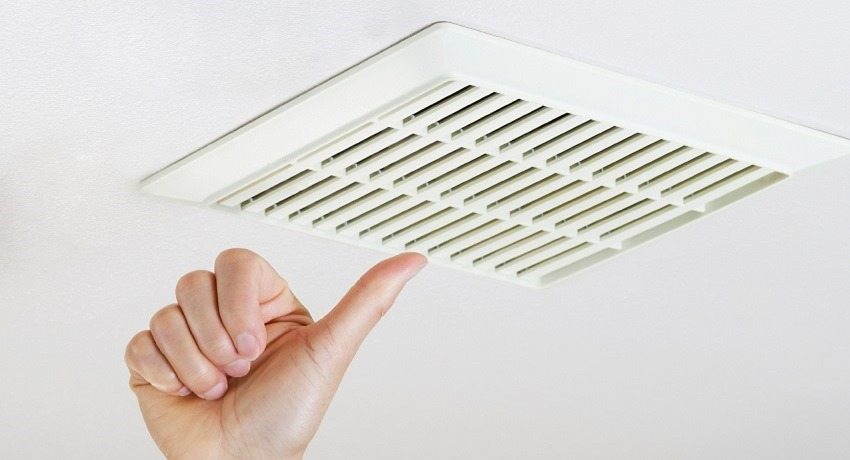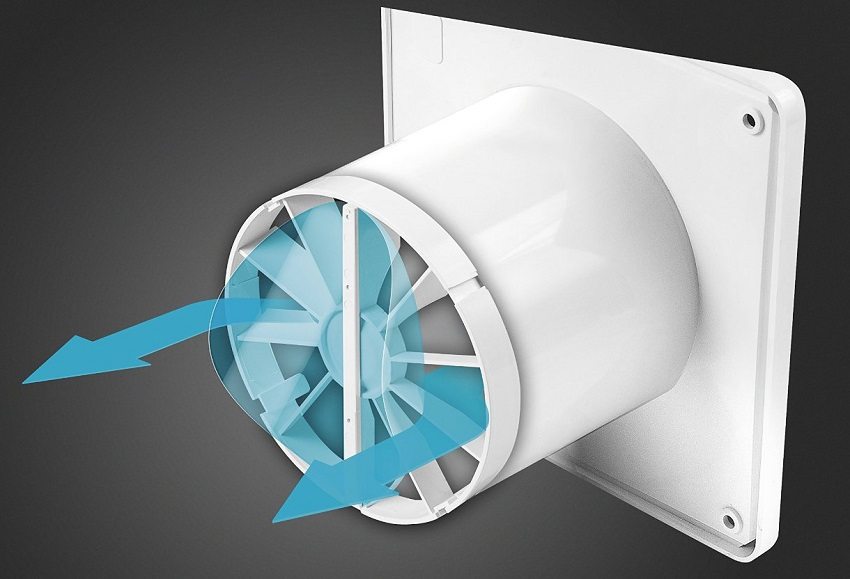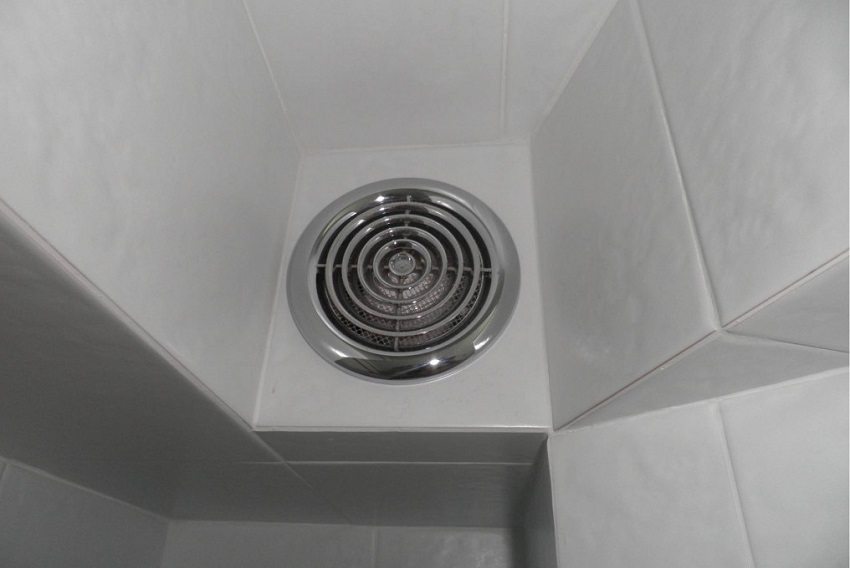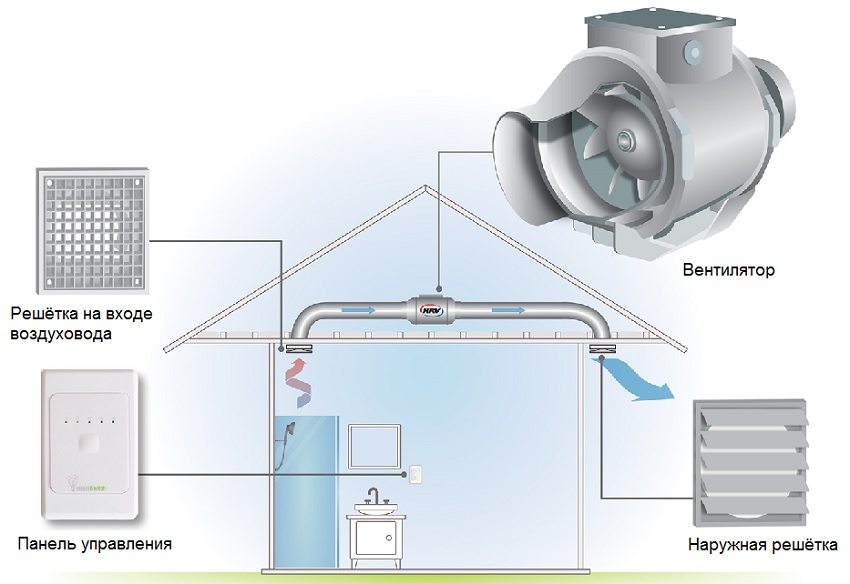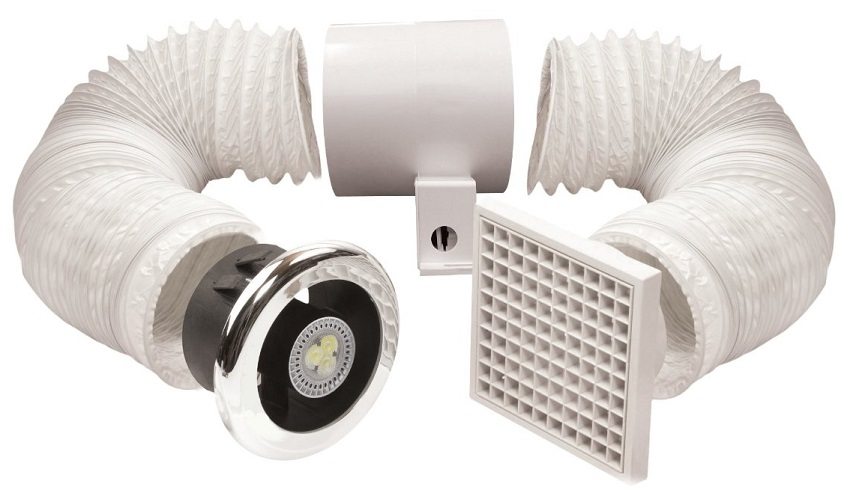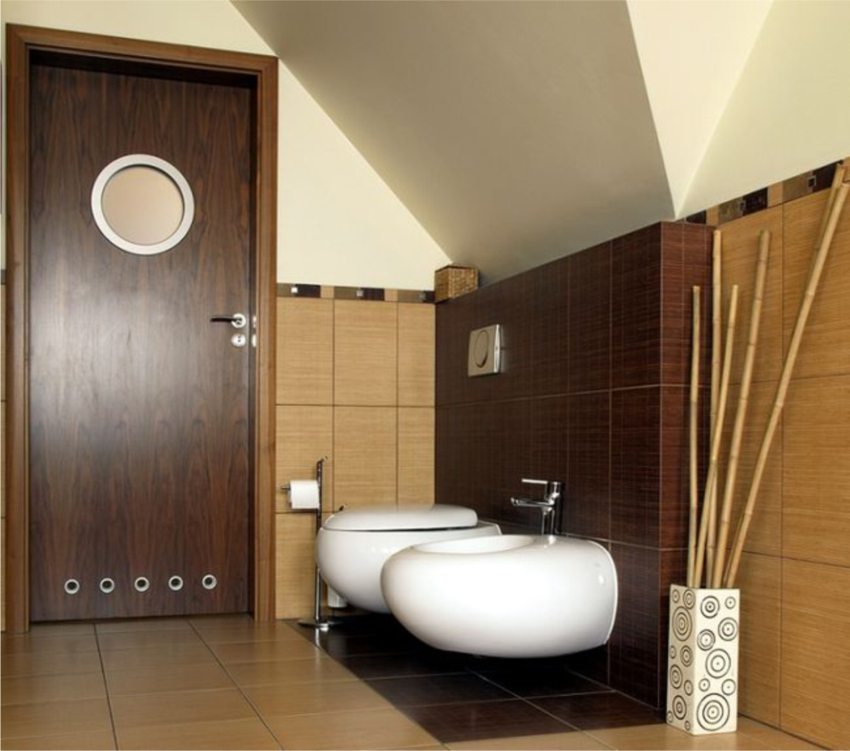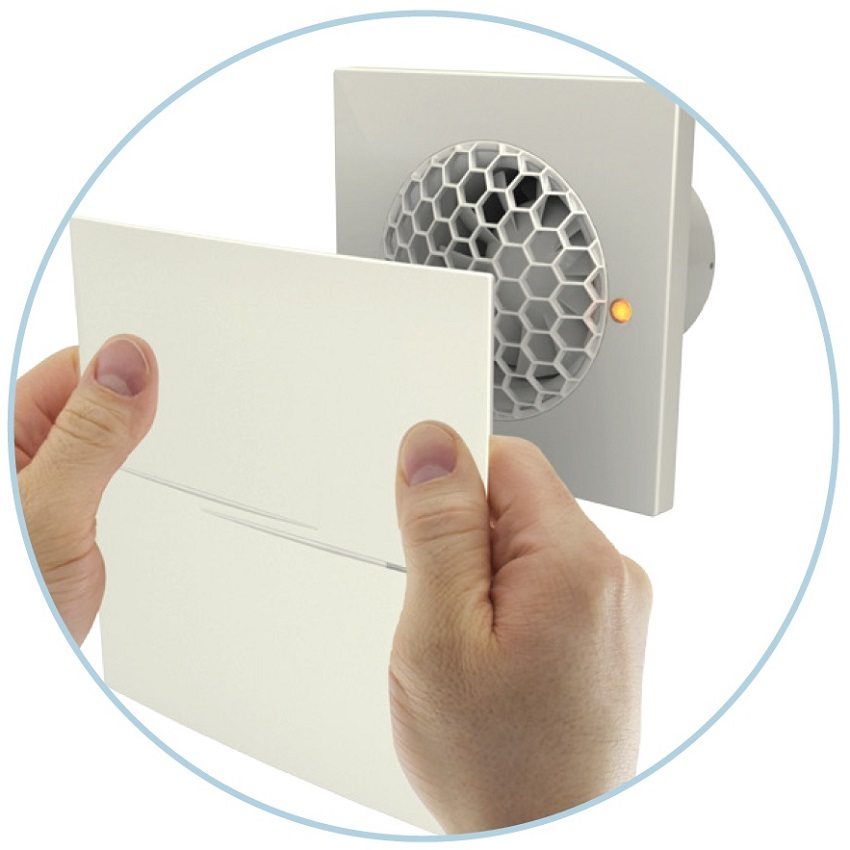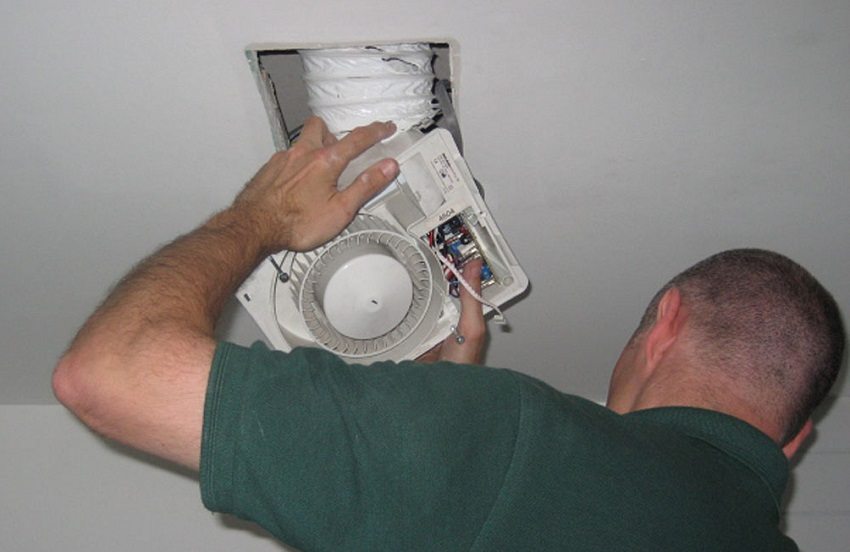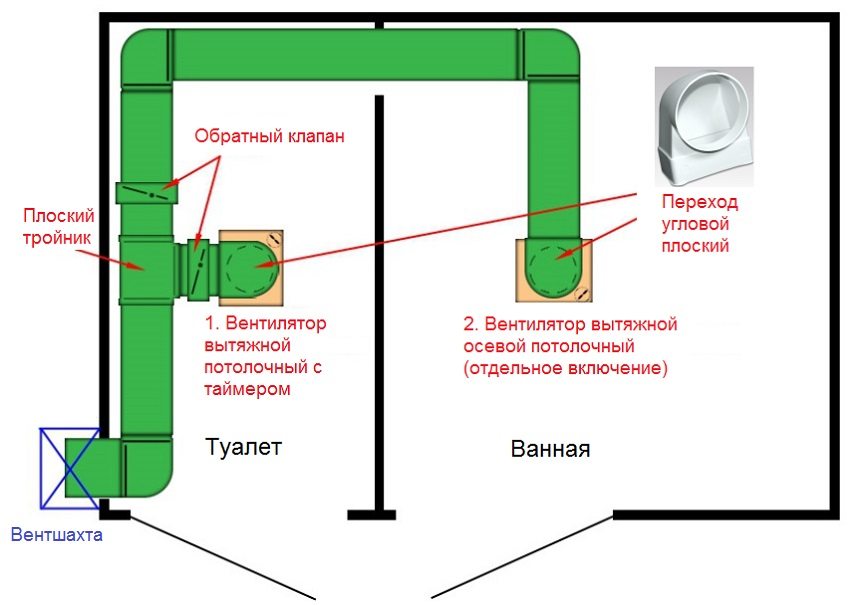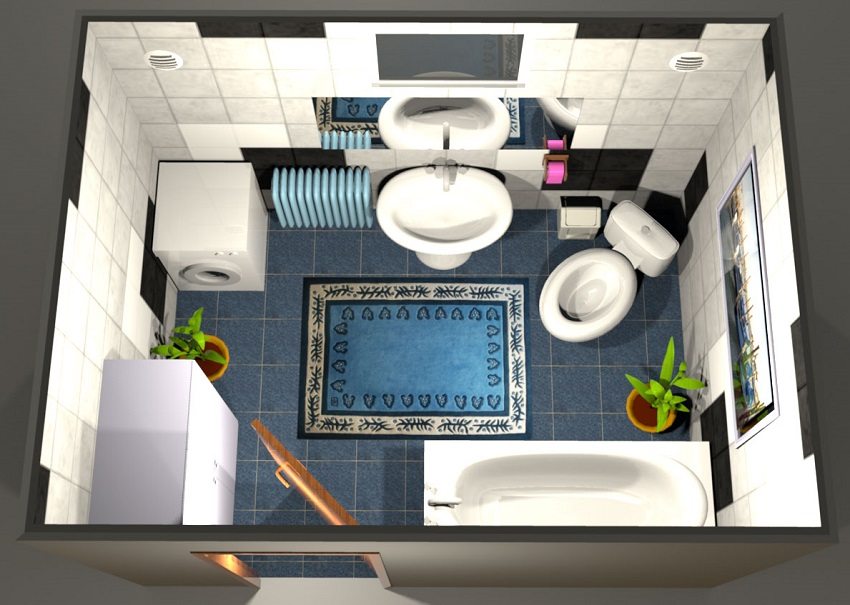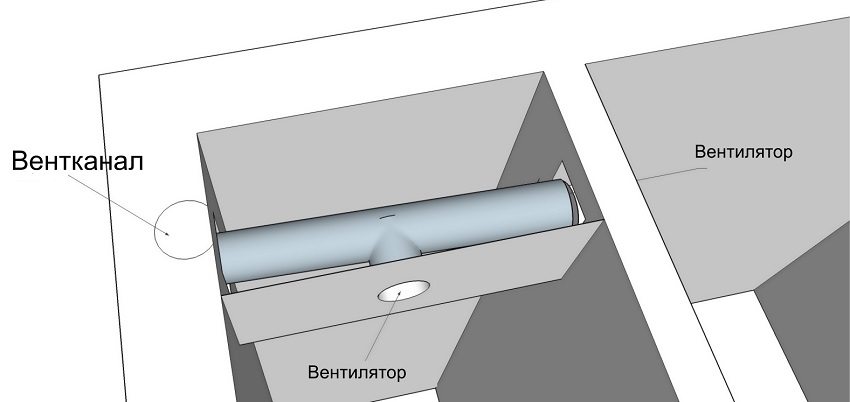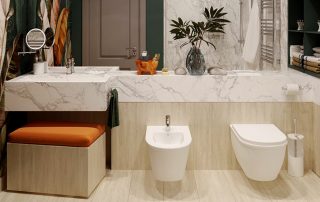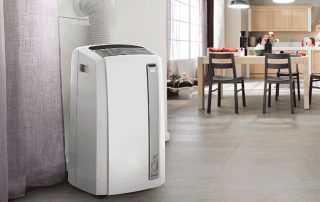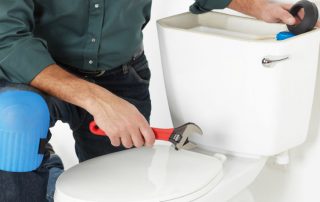The bathroom is the place where high-quality ventilation is essential. The extractor hood in the bathroom is designed to ensure effective removal of air from this room. Its main task is to eliminate excess moisture, prevent the formation of condensation and the formation of fungus. And if bathroom combined with toilet in one bathroom, then the hood also removes unpleasant odors, preventing them from spreading throughout the house. Find out how to install a cooker hood in a bathroom with your own hands and what is needed for this.
Content [Hide]
- 1 Types and functions of ventilation for bathrooms
- 2 Hood to the bathroom: criteria for choosing equipment
- 3 Features of calculating the power of the hood for a bathroom in a private house
- 4 Which fan to give preference
- 5 Self-installation of a hood in the bathroom: useful recommendations
- 6 Installing a hood in the bathroom with your own hands
Types and functions of ventilation for bathrooms
Before making a choice in favor of one or another air exchange system, it is necessary to familiarize yourself with the types and principles of operation of such systems. Extraction of the bathroom can be arranged in a natural and forced manner.
Natural extraction. Such a hood works due to the action of natural factors, such as the difference in pressure and temperature between the air inside and outside the room. The exhaust air is removed through a ventilation duct in the wall of the house. For air exchange, an open window or door is enough through which the supply air enters.
Very often, especially in apartment buildings of old buildings, ventilation ducts are clogged or clogged due to the destruction of ventilation tips on the roof of buildings. In this case, natural extraction in bathrooms does not work.
Mechanical extraction. The system of such a hood functions due to fan operation, forcibly removing the polluted air flow into the outlet ventilation ducts. Installation of such ventilation can be done at any time, while natural ventilation channels are laid during the construction phase.
Forced hoods in the bathroom and toilet are installed in the following cases:
- absence or weak functioning of natural air exchange;
- redevelopment bathroom or combining it with a toilet, when some of the ventilation ducts are removed;
- installation of electrical equipment that helps to increase the formation of steam, the volume of which is not completely removed by natural extraction;
- the bathroom is small - the extractor hood in the bathroom does not have time to remove the amount of steam generated when taking a bath or shower.
Hood to the bathroom: criteria for choosing equipment
To install a hood in the bathroom, which will fully cope with its functions, you should familiarize yourself with the parameters and features of the equipment:
- equipment and devices for hoods in the bathroom must comply with the standards of safe operation and have appropriate certificates and warranty sheets;
- the electric hood in the bathroom, powered by the mains, must be located in a protective case, in order to avoid water droplets or wet steam from entering the device;
- the capacity (performance) of the exhaust unit must allow the complete removal of polluted air. In the case when one hood passes through the bathroom from the toilet, its capacity should be enough to service two rooms;
Helpful advice! When purchasing a middle-class bathroom hood, keep in mind that the optimum performance of the device should be at least 100 m³ hour.
- equipping the hood with additional devices - humidity sensors, a timer, a “smart fan” system, a fan with a check valve;
- overall dimensions and design of the hood;
- equipment quality - choose reliable devices from reputable manufacturers;
- the degree of noise is an important parameter. Choose devices with a noise limit of no more than 25 dB;
- price-quality ratio". You can choose an affordable and functional model.
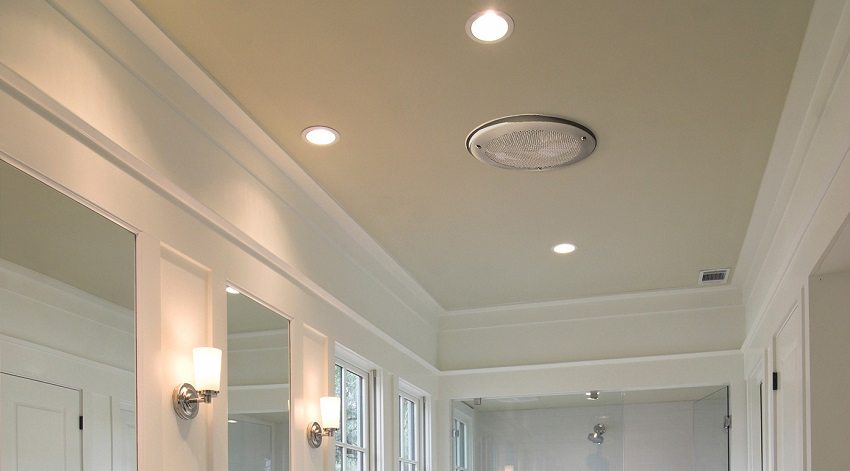
Modern hoods in the bathroom can be equipped with additional functions: timer, motion sensor, moisture meter
Features of calculating the power of the hood for a bathroom in a private house
Before purchasing and proceeding with the installation of the hood in the bathroom with your own hands, you should decide on the type of ventilation, the fan model and its power.
As for the type of ventilation in the bathroom, it can be exhaust, supply and combined. The most relevant and effective way is to make a range hood in the bathroom of the supply and exhaust type. Will the system channel or channelless depends on the presence of ventilation ducts. Duct systems are usually used in rooms with ventilation ducts.
The hood in the bathroom in a private house can be channelless. In private houses, usually one of the walls of the toilet or bathroom is outside. Therefore, owners of private houses can punch a through hole leading directly to the street and install a hood in it.

By installing a wall valve in the outer wall, you can equip ductless exhaust ventilation in the bathroom
If a duct type of ventilation is used in a private house, then you can do it yourself with an extractor hood into the bathroom from sewer pipes.
You can calculate the fan power for a bathroom in a private house or apartment using the formula:
M = V х (5 ... 10)where
M is the required performance;
V is the volume of the bathroom;
the numbers indicate the frequency of use of the bathroom.
The performance of ventilation devices for bathrooms and toilets depends on their size. Extraction fans in the bathroom are selected based on the volume of the serviced premises.
For example, it is necessary to calculate the power of the hood for the bathroom of a private house, the dimensions of which are 4x3x2.5 m (volume 30 m³). Taking into account that the use of the bathroom will be carried out by one person twice a day, we take the minimum coefficient, equal to 5.Then the required capacity of the exhaust unit is 150 units.
Before making the hood to the bathroom, make sure that there is a gap between the door and the floor for air intake. If it is not there, you can make a hole at the bottom of the door leaf and insert a ventilation grill into it.
Which fan to give preference
When choosing fans, pay attention to their noise level accompanying their operation. Suitable fans would be ball bearing models - they are quiet and durable. The power is selected depending on the volume of the bathroom and taking into account whether it is combined with a toilet.
Related article:
Pipes for ventilation: their main properties and selection parameters. Corrugated air ducts. A special type of pipe is a sandwich. Calculation of the diameter and insulation of air ducts.
A good option would be to purchase a device equipped with humidity, motion and timer sensors. Bathroom hoods with a humidity sensor automatically adjust and operate without human intervention.
By giving preference to the bathroom hood model with a check valve, you will protect yourself from re-entry of exhaust air into the room. Fans with a non-return valve prevent foreign odors and street dust from entering the room. The design of the check valve is such that as soon as the fan stops working, the check valve slams.
Check valves are of three types: controlled, self-closing (under the action of a spring) and passive (closed by an air flow). For bathrooms, self-closing check valves are mainly used.
Helpful advice! You should be aware that the degree of protection and tightness (water tightness) of the hoods is indicated by the manufacturer with the “IP” symbols. The safety of the device depends on the value of this value.
Before purchasing the hoods, read the quality certificates and availability of warranty documents for the products. If your bathroom is large, it will be more efficient to equip it with two hoods than to use one powerful model.
You can familiarize yourself with photos of bathroom hoods offered in a large assortment on specialized sites.
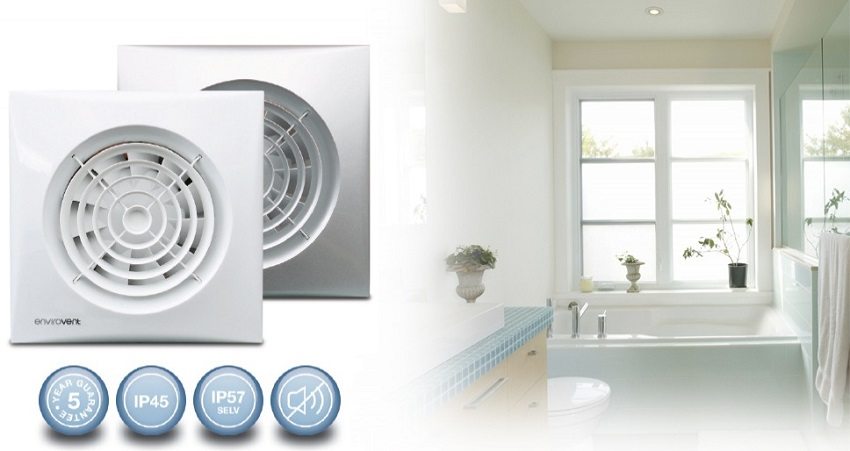
Before purchasing exhaust devices, read the quality certificates and availability of warranty documents for products
Self-installation of a hood in the bathroom: useful recommendations
One of the main factors in installing a hood in the bathroom is its safe operation. Often in old houses (the so-called "stalinkas"), a gas water heater was installed in the bathroom. In this case, the hood in the bathroom is not installed, since a sufficient volume of oxygen is required for the column to operate, and the fan will draw out all the air. Fans can create such a vacuum that backdraft occurs.
First of all, you should make sure that the bathroom has a ventilation hole. If there is, then the hood is inserted directly into this hole. If there is no hole, they arrange it with their own hands in the wall or on the ceiling of the room.
It is not recommended to install an extractor hood if the ventilation shaft is clogged and weak. If the channel is clogged, you should clean it yourself or contact your utilities.
The hood is mounted on the ceiling or in the wall, not lower than 200 mm from the ceiling and preferably opposite or diagonally from the door to create an inflow.The fan to be mounted must be the same size as the hole.
Helpful advice! To ensure the most efficient operation of the hood, it is recommended to install it as far as possible from the mixers, in order to avoid splashing water on the device.
When installing the hood, you can arrange to turn on the fan manually with a separate switch or make a connection that allows the fan to start working together with the light on in the bathroom.
Installing a hood in the bathroom with your own hands
Let's give an example of self-assembly of the hood, when a ventilation duct is provided in the room:
- we check the performance of the ventilation shaft;
- if the channel is clogged, we clean it with our own hands, if the area of the hole does not fit the dimensions of the device, carefully using a chisel and hammer, we increase it to the required size;
- we remove the external grille from the fan, insert the device into the hole of the ventilation duct and fasten it with self-tapping screws or liquid nails;
- make sure that the device fits snugly in the opening of the ventilation duct;
- cover with a grill and with the help of a sealant seal the joints between the external grill and the wall;
- we connect the wires to the mains;
- for aesthetic reasons, it is better to choose a grid design that matches the style of the bathroom.
By installing an extractor hood in a bathroom or a bathroom, you will prevent the formation of condensation on the walls and metal surfaces of the mixers, eliminate unpleasant odors - the air in the bathroom will be clean and the room will be dry.
